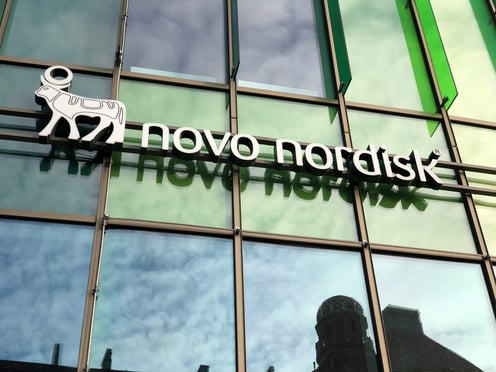With more than a quarter of the world’s populationowning mobile devices and Americans checking them several times an hour, it’s nowonder today’s employees always have their heads in their Applesand Androids.
|Related: Don't let tech burn out yourworkforce
|The convenience of mobile technology means employees can beconnected 24/7 not only to each other, but also to work. While thismay ease communications efforts and increase efficiency at work, italso can lead to the proverbial “burnout” causing workers to feelstressed as a result of feeling the need to constantly be checkingtheir phones.
|Prolonged stress can feed disengagement which then can lead tolower productivity and eventually decreased profitability andreturns.
|As companies embrace mobile technology as part of a digitalworkplace strategy, now is the time to strike the right balance inits use. And, in doing so, consider the following five dos anddon’ts when putting into place a mobile strategy that encouragesconvenience at work but avoids overload.
|Create a formal policy to address BYOD
As companies expand and embrace people’s growing reliance ontheir mobile devices, a need exists to create and formalize apolicy with respect to employees bringing and using their owndevices for work.
|“Bring your own device” (BYOD) policies (like many policies)bring certainty into the workplace, not to mention eliminate thequestions that employees want to ask but may be afraid to do so.Workers and organizations alike will benefit from guidelines whichsupport both the flexibility of working via mobile as well asstrike an appropriate and well-served balance between anindividual’s time both on and off the job.
|Set boundaries
To the extent individuals are using their mobile device both athome and work, consider setting boundaries (or at leastrecommendations) for how and when employees use their devices.
|Related: Technology, work/life balance top factors inemployee happiness
|As it pertains to managers and above, restrict sending of emailsto direct reports after a certain time of the day (e.g. 6 p.m.) aswell as during personal time off; state publicly employees are notrequired to respond to email after a certain hour; encourageemployees to put their smart device to rest (even for personal use)when it’s time for them to get some rest.
|For the sake of mental wellness, it’s critical employees knowthe importance of disconnecting.
|Simplify
Once policies are established and employees understand theiremployers’ expectations on how mobile can and should be used in theworkplace, now it’s time to consider how best to take advantage ofthe opportunity mobile presents for workers to be the mostefficient and productive.
|Related: Tech driving changes in employeefunctions
|In doing so, it’s important to recognize the screens of mostApple and Android smart devices are small. To encourage the use ofmobile in the workplace, the way in which information and workplacetools are delivered needs to be kept simple. The user experienceshould be intuitive and easy to navigate.
|When it comes to the delivery of content, consider a folder-likestructure that doesn’t require an employee to have to scroll-in andout to access the information. For workplace tools like benefitportals, scheduling and timekeeping, consider solutions that areeither mobile-friendly or offer a native app experience. And forthose companies which have corporate intranets, consider thedifficulty of logging in or getting past the firewall.
|As a rule of thumb, if an employee can’t access what they “need”or “need to know” in a matter of seconds or with less than twotaps, the solution probably won’t be used.
|Rethink content
Considering the above as well as the nature of youngergenerations of workers (especially millennials and Gen Zers),organizations need to rethink the types and effectiveness of theinformation and content that they share with employees throughmobile. Take for example the traditional newsletter.
|Are employees reading past the first few lines? Probably not.What about video and images? Given attention spans in the socialmedia era, there’s a greater chance that messages delivered throughthese medium will resonate louder and more clearly.
|Offer a mobile hub
With hundreds upon hundreds of apps, employees can get boggeddown wading through the onslaught of channel choices. And, how manyworkplace apps can you expect employees to download, especially totheir own device?
|Leading technology industry analyst group, Gartner, talks aboutcompanies embracing the concept of a “mobile hub” -- theaggregation of content and workplace tools and functions housedunder a “single pane of glass.”
|As you embark on your mobile journey, consider one centralsolution through which employees can access all companyinformation, rather than asking them to download multiple apps.
Complete your profile to continue reading and get FREE access to BenefitsPRO, part of your ALM digital membership.
Your access to unlimited BenefitsPRO content isn’t changing.
Once you are an ALM digital member, you’ll receive:
- Critical BenefitsPRO information including cutting edge post-reform success strategies, access to educational webcasts and videos, resources from industry leaders, and informative Newsletters.
- Exclusive discounts on ALM, BenefitsPRO magazine and BenefitsPRO.com events
- Access to other award-winning ALM websites including ThinkAdvisor.com and Law.com
Already have an account? Sign In
© 2024 ALM Global, LLC, All Rights Reserved. Request academic re-use from www.copyright.com. All other uses, submit a request to [email protected]. For more information visit Asset & Logo Licensing.








